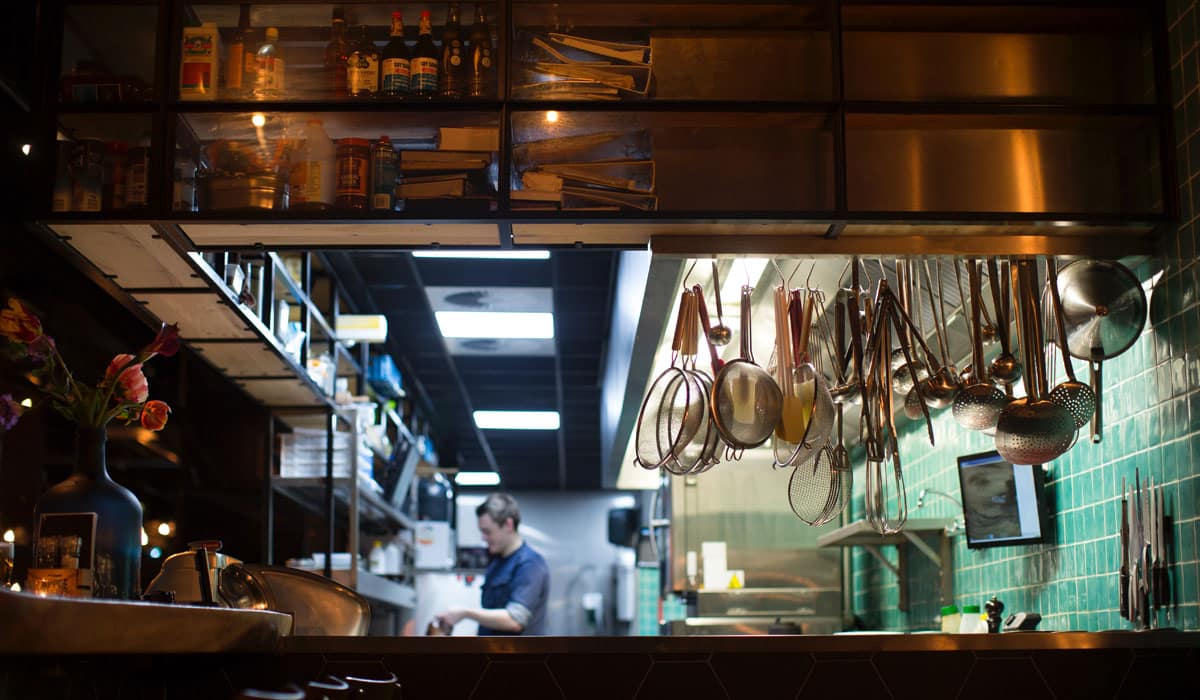Waste is the enemy of profit. A successful quick-service restaurant stores, prepares, and serves a huge volume of food, and keeps an average of $10,000 in frozen and refrigerated inventory onsite per location. The typical quick-serve also uses roughly three times the energy consumption per square foot of other commercial spaces. With all of that food and energy use being a normal part of business, some degree of waste in both may be unavoidable, in even a well-run quick-service environment. However, proper restaurant refrigeration monitoring can drastically reduce both.
Quick-service restaurants in general are early adopters of technologies that save energy and money. Energy Star rated appliances, LED Lighting, and other energy-efficient technologies have become common and essential elements of many restaurants. But many operators are still relying on just the meter outside the building to measure their electrical use and one thermometer per unit to monitor their refrigerators and freezers. This approach is frankly obsolete, and worse—it’s wasting money.
There is a huge opportunity for most operators to save energy and protect their inventory using specialized restaurant refrigeration monitoring systems. With increasing awareness and understanding of the advanced features and integrated systems of today’s refrigeration monitoring systems, their impact on overall restaurant energy efficiency, and the wide range of benefits they can provide, it’s not surprising that more and more operators are making this technology part of their success.
How do refrigeration monitoring systems work?
No quick-service venue completely ignores its refrigerators and freezers, the energy they use, or the precious food inventory they preserve. But if all you’re doing is keeping an eye on your electric bill, asking employees to watch a thermometer on the side of a unit (which will often be inaccurate), and occasionally making adjustments in hopes of keeping food not too warm and not too cold, then you’re setting your restaurants up for failure. By contrast, state-of-the-art restaurant refrigeration monitoring systems use integrated hardware and software to deliver energy efficiency and a system of invaluable alerts to identify potential malfunction or improper usage, averting failure of units and loss of food inventory.
First, these systems work by managing and minimizing energy use to be one the biggest contributors to overall restaurant energy efficiency. An unprecedented amount of useful data about your refrigeration and freezer units is collected by multiple thermostats and humidity sensors integrated with IoT (Internet of Things) smart meters. This data is transmitted to a central management platform, which uses the smart metering technology to make adjustments to optimize performance and energy use. That includes cycling motor and fan activity to save up to 60 percent of energy costs while maintaining constant, ideal temperatures. Electric companies charge varying rates for power at different times of day, and the AI technologies of the more advanced systems can schedule cycles to displace as much kW/hours as possible to low-cost points in the day. They can also act as a virtual VFD (Variable Frequency Drive), allowing the benefits of subtle control to motors that are often too small for an actual VFD.
In addition to managing and reducing energy consumption in freezer and refrigeration units, restaurant refrigeration monitoring solutions include systems of alarms and alerts to draw attention to problems that need manual attention, immediately. Restaurants experience an average of two major loss events of food inventory due to improper or malfunctioning refrigeration/freezing each year, so this is a very important aspect of the benefits they provide. Sometimes seals on units fail, or components malfunction in ways that risk an unacceptable rise in temperature. Unfortunately, it is also all too common for restaurant staff to overlook improperly closed lids or doors on refrigeration units, or even to intentionally prop them open for convenience. Proper monitoring systems will include alarms that not only notify on-site staff of such events; text and email messages are also sent to offsite management, notifying them of the location and nature of the problem and allowing appropriate intervention. The best systems also send alerts identifying small irregularities in refrigeration function early, allowing them to be repaired or adjusted, rather than leading to the breakdown of a (probably very expensive) unit.
How can operators get these systems in their restaurants?
A fully integrated, smart-metered refrigeration monitoring system is a complex project that involves significant investment of capital and personnel-hour, and so it’s usually provided by a third-party vendor. The different devices involved in restaurant refrigeration monitoring are produced by different manufacturers, which means sourcing them and combining them into a functional system is more than most quick-service operators are willing or able to take on. Effective ongoing monitoring and maintenance of the system also involves a combination of a software platform and actual human specialists, meaning that it’s not a one-and-done effort. However, between the waste in both energy and food inventory that it can save, upgrading to a proper monitoring and management system for your refrigeration systems is an important and smart move. This is especially true if you can make it part of a broader energy efficiency and technology upgrade. Luckily, there is now a powerful option for restaurant operators to do just that, without all the hassle, risk, and expense of doing it themselves.
EEaaS (Energy Efficiency as a Service) companies are a new and growing sector of efficiency upgrade specialists that can put cutting-edge technology and full-time monitoring in reach for almost any quick-service restaurant operation. An EEaaS company that specialize in quick-serves and restaurant energy efficiency may provide refrigeration monitoring as part of a comprehensive energy management solution that includes interior and exterior LED lighting, multilevel HVAC improvements, and smart water heating.
As founder and CEO of Budderfly, Al Subbloie is focused on disrupting the Energy Management space through a unique and highly compelling Energy as a Service technology solution. His 35 years of experience include founding 3 companies and serving as Board Member on several successful software and managed services companies. Al is passionate about creating highly successful, disruptive go to market growth models.

